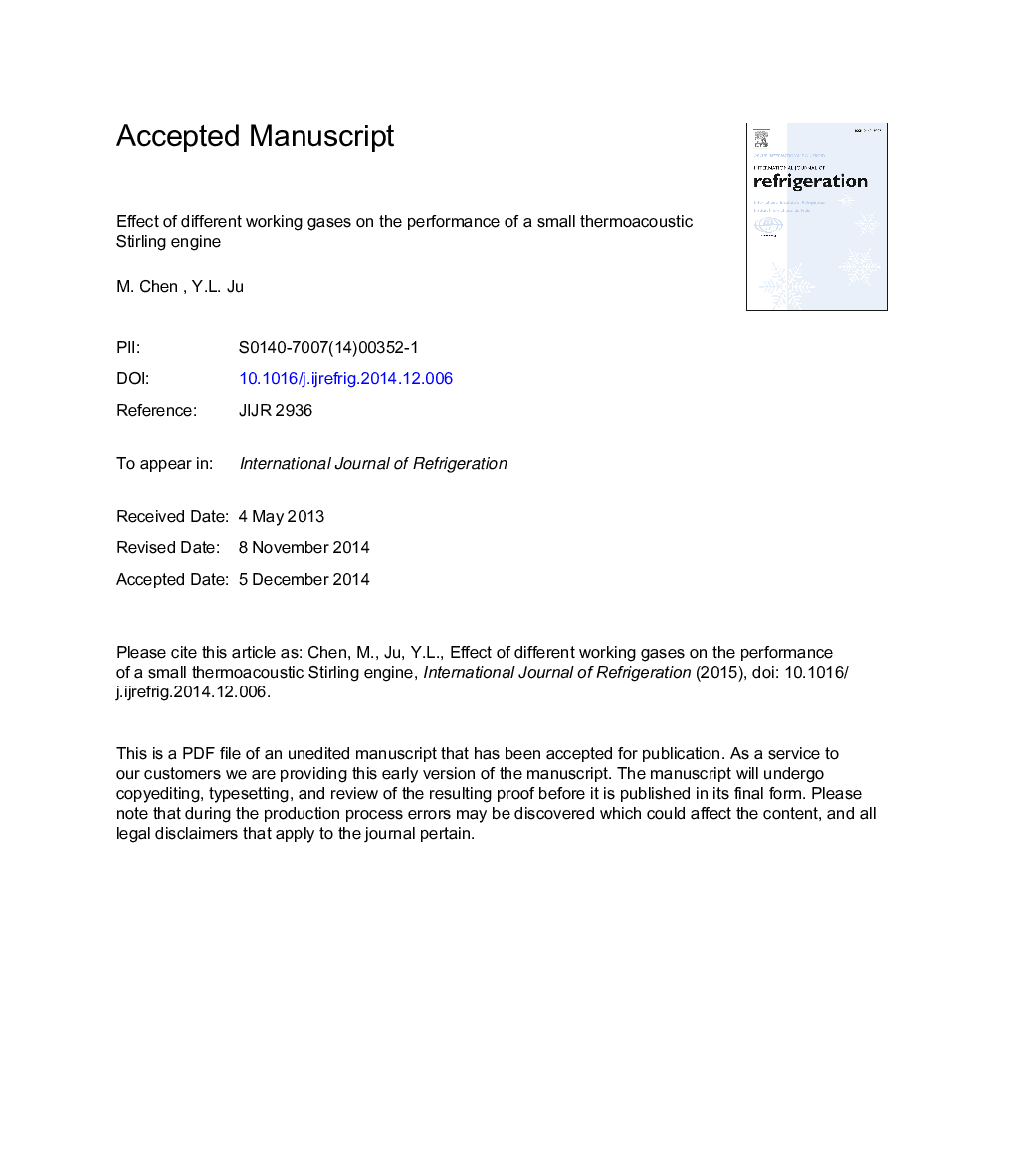| Article ID | Journal | Published Year | Pages | File Type |
|---|---|---|---|---|
| 7175528 | International Journal of Refrigeration | 2015 | 25 Pages |
Abstract
The performance of a small thermoacoustic Stirling heat engine (TASHE) was investigated with three kinds of working gases experimentally and numerically. The examined performances focused on the operating frequency, onset temperature, pressure amplitude and some temperature characteristics after onset. The working frequency with nitrogen, argon and helium as the working gas was 45Â Hz, 42Â Hz and 130Â Hz, respectively. The engine worked with helium in a much wider range of mean pressure than with nitrogen and argon. There was an optimal mean pressure for the minimum onset temperature for each working media. Using nitrogen and argon as working gas rather than helium, another optimal mean pressure for the highest pressure ratio was obtained in the experiment. The loop dimension was indispensable in determining the frequency and the highest pressure ratio was observed in the resonator cavity.
Keywords
Related Topics
Physical Sciences and Engineering
Engineering
Mechanical Engineering
Authors
M. Chen, Y.L. Ju,
